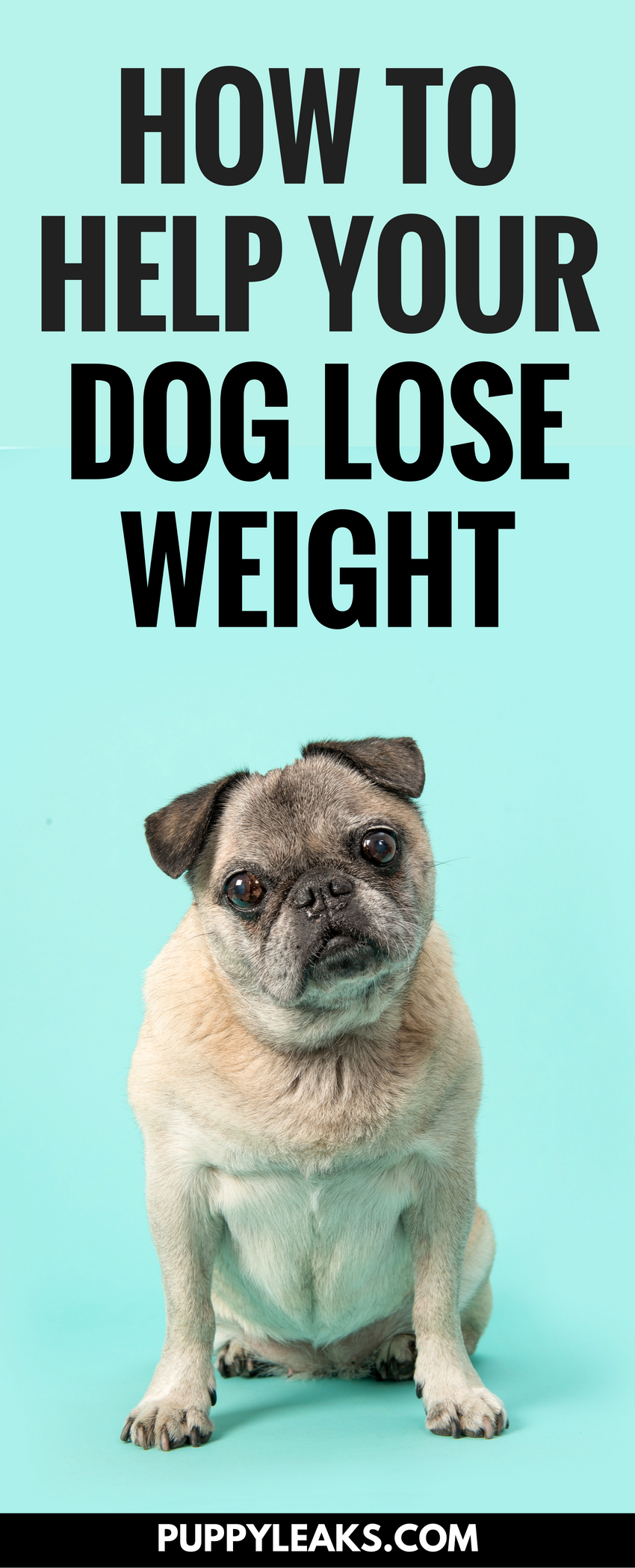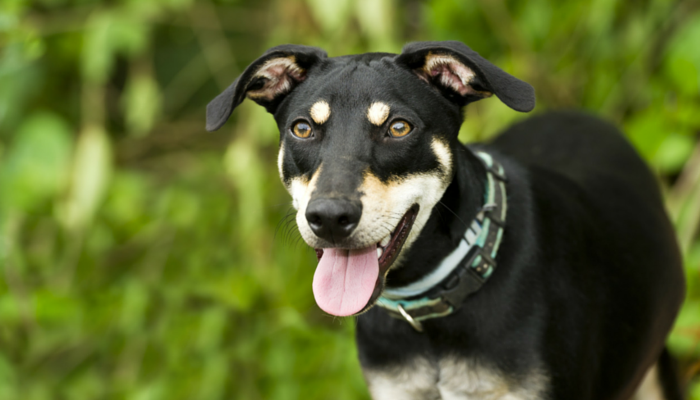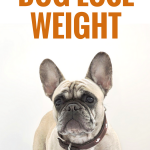5 Tips To Help Your Dog Lose Weight
“Eat less and exercise more” is the answer we hear when it comes to losing weight, yet it’s not quite always so simple.
Yes, if we want to lose weight we need to burn more calories than we consume, but weight loss isn’t just about eating less and exercising more; it’s about finding the balance that’s right for you which includes making diet and exercise changes when needed.
And the same is true for our dogs. To help them lose weight you need to help them burn off more calories than they consume, but to maintain that weight you’ll need to find a balance that’s right for them.
My dog started gaining weight a few years back, and I tried many methods. Some worked, and some didn’t. The good ones that worked are the ones I’m going to share today. They not only helped her lose weight, they helped her keep it off in the long run. Here’s 5 tips to help your dog lose weight, and help keep it off in the long run.
Feed Less & Always Measure
Now the first part of this is pretty obvious — if your dog needs to lose weight they should be eating less. But the second part about measuring your dogs meals is often overlooked, yet without measuring it’s tough to gauge results. If you’re going to be cutting down on how much your dog eats the only way to know for sure how well it’s working is by measuring out all of their meals and keeping track of their progress.
If you’ve been feeding the same amount of food for awhile and your dog needs to lose some weight cut down on their portion size a little (when Laika needed to lose a few pounds I’d cut 5% at a time). Get out a measuring cup or scale and start measuring every single one of your dog’s meals. For 3-4 weeks keep track of their weight, how much food they’re eating, and adjust accordingly.
When it comes to portion size it’s easy to overestimate how much our dog’s need to eat, and unfortunately dog food labels aren’t an exact science. They’re based on your dog’s size and age, but they don’t take your dog’s activity level into account. A Border Collie that works on a farm will need more calories than a Cocker Spaniel who snuggles all day — yet if they weigh the same the label on your dog food will recommend the same amount of food for both. When it comes to keeping your dog fit it’s important to measure out their meals until you find the amount that’s right for your dog.
If you’re not comfortable with changing your dog’s diet, or you’re not sure how much to decrease their meals by, consult your veterinarian.
Give Your Dog More Exercise
We could all use some more exercise, and our dog’s are no exception. When it comes to helping your dog lose weight a couple of extra exercise sessions every day can have major results. And I’m not taking about taking your dog out for a marathon run either — there’s plenty of simple ways to ensure your dog’s getting more exercise each day. Two 5 minutes sessions of tug or fetch each day can help your dog burn off a lot of calories.
If your dog isn’t in very good shape to begin with remember to start out slowly. Stick to low impact exercises such as swimming and walking until they build up their endurance again. Rather than taking your out of shape dog for a 8 mile hike on the weekend try extending your daily walks by a few extra minutes each day. And rather than switching your leisurely walk into a run try upping the pace. A brisk walk is a great way to help burn off calories for dogs and humans alike.
Some of my favorite ways to exercise my dog include going for our daily walk, playing fetch or frisbee, playing tug of war, swimming, hiking, using a flirt pole, and playing some nose work games such as “find the treats.” There’s a variety of ways to get your dog up and moving each day, including plenty of indoor games & activities.
Adding in a few extra activities to your dog’s daily routine, such as a game of fetch or tug, will help your dog burn off a lot more calories. And since they’re a fun part of the day it’s easy to keep it up in the long run.
Skip Out On All The Extra Treats
It’s tempting to give into your dog every time they beg for food, but if your dog needs to lose weight you’ll need to consider cutting out all those extra scraps and treats. Those calories add up quickly, and they’ll negate all of the other weight loss strategies you’ve been using. If you’ve changed your dog’s diet and exercise routine and they’re still not losing weight it’s time to start cutting down on all those extra treats.
If you use treats for training, or if you want to give your dog some snacks throughout the day start measuring them out. Use less of them, and break them into smaller pieces. Count any treats you give your dog each day towards their total caloric intake, and watch the results.
Laika’s pretty easy; she’ll gladly work for her regular food when it comes to training. So when I’m going to work on some training I’ll just subtract some of her regular food for the day and set it aside for training.
Another tip to help your dog lose weight is to find a fruit or veggie that your dog really loves and use those as treats. They contain less calories than store bought treats, but they do contain a lot of natural sugar and fiber — so remember to use them in moderation. Some popular options that are safe for dogs include carrots, sugar snap peas, green beans, apples (without the seeds), seedless watermelon, bananas, strawberries, broccoli and pumpkin.
Feed Your Dog Multiple Times a Day
Do you feed your dog one big meal a day? One easy way to help them lose weight is to split their food into two or three smaller meals throughout the day.
Like us our dogs have a simple stomach structure, and after about 8-10 hours of eating it’s empty and they’re hungry again. Feeding your dog multiple times a day mimics their natural habits, and it helps keep their metabolism stable.
An easy schedule to follow is feeding your dog once in the morning, and once in the early evening. Eating at different times will give your dog a chance to burn off some of those calories between meals. It also prevents them from having to digest a full day’s worth of food all in one sitting, and can help prevent larger dogs from getting bloated.
Have Your Dog Work For Their Food
I know what you’re thinking — making your dog work for their food seems pretty mean. We’re their caretakers after all, and we’re responsible for providing them with food & shelter; why should they have to work for it? Well the truth is most dog’s don’t mind working for food out of a puzzle toy or treat dispenser; most find it quite engaging. Their wild ancestors had to hunt for each of their meals, and using a food dispensing toy is an easy way to let them use some of their natural scavenging abilities.
You’ve got plenty of options when it comes to having your dog work for their food, from DIY food dispensers made out of PVC pipe or a plastic container, to store bought puzzles. My personal favorite is the Bob-A-Lot (available from Amazon) interactive dog toy. It’s easy to fill, dishwasher safe, and it keeps my dog busy for 15+ minutes as she works at eating her meals.
Using food dispensing toys will give your dog plenty of mental stimulation, and they’re an easy way to get your dog up and moving. So rather than thinking of it as having to “work” for their food I like to think of it as a fun and way to keep my dog busy and entertained during mealtime.
If Your Dog Still Isn’t Losing Weight (or Gains Weight Suddenly)
Most dogs gain weight gradually, especially once they’re out of puppyhood, but sudden weight gain can be the sign of something serious. While transitioning your young dog to adult food can help in some instances, it’s important to keep track to make sure they’re not gaining weight at an alarming rate.
Certain medical conditions, such as hypothyroidism, diabetes and Cushing’s disease can cause your dog to lose weight, making it nearly impossible to keep them trim. If your dog has gained a lot of weight recently, or if you’re struggling to keep them fit it’s time to take a trip to the vet.
How Do You Maintain a Healthy Weight For Your Dog?
Have you ever had to help your dog lose weight? What methods did you use? Do you have any favorite tips for keeping the weight off in the long run?

This post contains affiliate links, if you make a purchase I’ll earn a commission. To find out more please read our disclosure.


For my dogs, I just limit how much I feed them. Though I agree, it is hard not to give them tons of treats! I also weigh them occasionally since I seem to be blind to any chubbiness they might exhibit.
For exercise, my wife and I like to take them on hikes. It’s good for both the dogs and for us!
If a dog is raw fed, I’ve heard that feeding a dog once a day will help promote weight loss because that full 23 hour period allows for a fasting that resets the digestive system. I haven’t tried the once a day, but I have reduced meals and replaced my girl’s normal food with bone broth. Another thing that is helping is to add fat to the diet; fat jump starts the metabolism. My girl doesn’t like coconut oil , but she loves grass fed butter – I replace raw with a tablespoon of butter twice daily a few days a week.
She’s been losing a pound every week or so 🙂
Thank you for such a great tips!! It’s very important to keep your dog healthy. I will keep in mind with all of these suggestions. I usually take my dogs out on walks daily and when I don’t have time I use a dog walking service. I use one called Swifto! They’re great. I just need to keep in mind about how to feed my dog properly!
Thanks again. 🙂
I’m always blown away by how often I see people over treating their dogs, not going for walks, and then wondering why their hound is a little rolly polly. Good advice, thanks for the tips!
You can also give them healthy snacks instead of the usual bought varieties. My dogs love the odd carrot or chunk of cucumber, and it helps to clean their teeth just as well!
have owned many dogs and found their happy weight, mainly by exercising, but also by reducing their kibble. Reduce by 10% below what is recommended, watch carefully for weight gain/loss. The maximum would be a reduction of 1/5(20%) of the maintenance amount, but check with your vet, due to her age. Some dogs need a lot less than is listed on the bag, so when you change kibble or get a new dog (congratulations), you have to watch their weight carefully until you get to a level they no longer gain and are at maintenance. If you live by a vet it is best to just walk over and pop her on the scale, weigh her weekly until you establish the food quantity for maintenance of weight, then reduce from there and monitor. Some dog food stores also have scales to weigh your dog. If you cannot weigh her, maybe measure her waist regularly(right in front of her hips, same as humans), just to make sure she is not ballooning. Some dogs benefit from better food (more meat/fewer carbs) and restrict their intake themselves. https://esacare.com/top-three-dog-training-myths-explained-by-14-renowned-experts/
Your article is in easy words and full of information there is no extra words I like your way of writing articles.